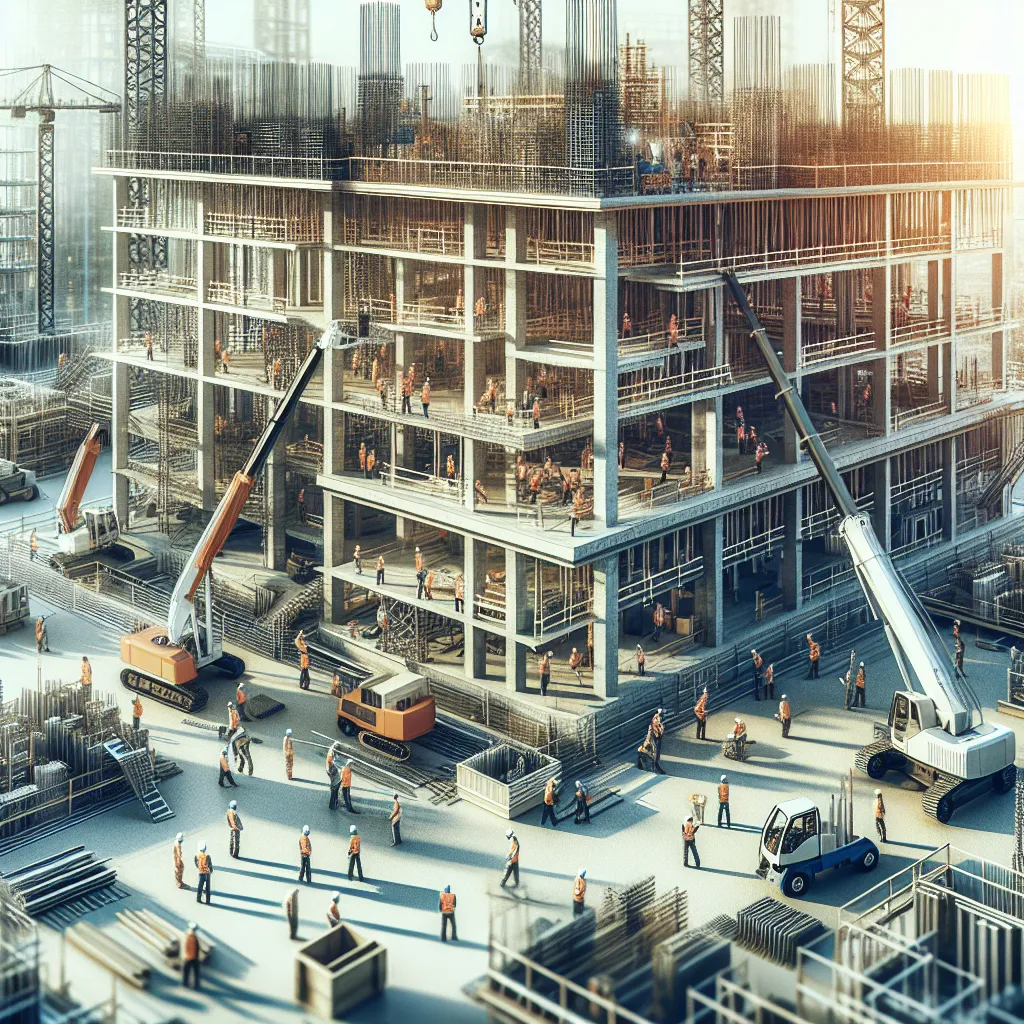Foundation Construction: Key Considerations
When it comes to construction, the foundation is the most critical element of any structure. Proper foundation construction is essential for the long-term stability and durability of a building. There are several key considerations that need to be taken into account when undertaking foundation construction.
First and foremost, the soil conditions at the construction site must be thoroughly assessed. The type of soil will influence the design and construction of the foundation. For instance, expansive clay soil may require special measures to prevent foundation movement, while sandy soil may necessitate a different approach to ensure load-bearing capacity.
Another crucial consideration is the local climate and environmental factors. The foundation design must account for frost depth, water tables, and the potential for seismic activity in the region. Adapting the foundation construction to these specific conditions is vital for ensuring the longevity and stability of the structure.
Furthermore, the choice of materials and construction techniques is paramount. Whether using concrete, stone, or steel, the materials must be selected and installed in a manner that will provide adequate support and resistance to the forces acting upon the foundation. Additionally, proper drainage and waterproofing measures should be integrated to protect the foundation from water damage.
In conclusion, foundation construction requires careful planning, thorough site evaluation, and expert execution. By considering soil conditions, local climate, materials, and construction techniques, builders can ensure that the foundation of a structure is robust, resilient, and built to last.
Advanced Framing Methods for Efficient Building
Advanced framing methods are essential for efficient and sustainable construction. By utilizing techniques such as optimum value engineering (OVE), builders can significantly reduce material waste and improve energy efficiency in buildings. OVE involves strategically spacing studs at 24 inches on center rather than the conventional 16 inches on center, which allows for increased insulation and reduces thermal bridging.
Another crucial aspect of advanced framing is the use of two-stud corners and ladder blocking, which minimizes the use of lumber and allows for more insulation space. Additionally, the implementation of insulated headers can further enhance energy efficiency by reducing heat loss through framing elements. By adopting these advanced framing methods, construction professionals can create structurally sound buildings while reducing environmental impact and improving energy performance.
In conclusion, incorporating advanced framing techniques such as OVE, two-stud corners, ladder blocking, and insulated headers is paramount for efficient and sustainable construction. These methods not only contribute to resource conservation but also result in buildings that are better equipped to meet the demands of energy efficiency and environmental responsibility.
Effective Roofing Techniques for Long-lasting Structures
Effective roofing techniques are crucial for ensuring the longevity and durability of a structure. When it comes to constructing a long-lasting roof, there are several essential building techniques that should be prioritized.
1. Proper Waterproofing: Utilizing high-quality waterproofing materials and ensuring a seamless application is essential for preventing water infiltration and damage to the structure.
2. Adequate Insulation: Installing proper insulation not only helps in maintaining comfortable indoor temperatures but also contributes to the structural integrity of the roof.
3. Quality Roofing Materials: Choosing durable and weather-resistant roofing materials such as metal, tile, or high-quality shingles can significantly extend the lifespan of the roof.
4. Precision in Installation: Attention to detail during the installation process, including accurate measurements and proper sealing of joints, is essential for the effectiveness of the roof.
5. Structural Support: Ensuring that the underlying structure of the roof, including trusses and support beams, is built to handle the weight and pressures exerted on the roof surface is critical for long-term stability.
6. Regular Maintenance: Implementing a regular inspection and maintenance schedule can help identify and address issues early, preventing small problems from escalating into major concerns.
7. Proper Drainage: Effective design and installation of gutters and downspouts are essential for directing water away from the roof and foundation, preventing water damage.
8. Wind-Resistant Design: Incorporating features such as properly secured roof edges, impact-resistant materials, and aerodynamic designs can help the roof withstand strong winds and storms.
9. Ventilation Systems: Adequate ventilation can prevent moisture buildup in the attic or roof structure, reducing the risk of mold, rot, and structural damage.
10. Professional Installation: Engaging experienced and reputable roofing contractors who adhere to industry best practices can ensure that the roofing techniques employed are effective and long-lasting.
Implementing these essential roofing techniques is crucial for constructing durable and long-lasting structures that can withstand the test of time and environmental factors.
Sustainable Materials for Eco-friendly Construction
When it comes to sustainable construction, using eco-friendly materials is essential for reducing environmental impact and promoting a healthier living environment. Incorporating sustainable materials into construction projects can help to minimize carbon emissions, decrease energy consumption, and conserve natural resources. Here are 10 essential building techniques that focus on sustainable materials for eco-friendly construction:
- Utilizing recycled materials such as reclaimed wood, recycled steel, and recycled glass helps to reduce the demand for new resources and lowers the amount of waste sent to landfills.
- Opting for renewable materials like bamboo, cork, or straw bales can significantly decrease the reliance on non-renewable resources and promote the use of rapidly replenishing materials.
- Integrating energy-efficient insulation made from natural fibers, recycled denim, or wool can enhance the building’s thermal performance while reducing the overall energy consumption for heating and cooling.
- Choosing low-impact, locally sourced materials minimizes transportation-related emissions and supports the local economy, all while lowering the carbon footprint of the construction project.
- Exploring alternative eco-friendly options for traditional building materials, such as utilizing rammed earth instead of concrete, can significantly reduce the environmental impact of the construction process.
- Incorporating sustainable roofing materials like solar shingles or green roofs not only reduces energy consumption but also provides opportunities for renewable energy generation and green space creation.
- Embracing innovative composite materials made from natural fibers and bio-based resins can offer high-performance and sustainable alternatives for various construction applications.
- Adopting advanced framing techniques that minimize the use of lumber while maintaining structural integrity can reduce resource consumption and construction waste.
- Implementing water-saving strategies by using sustainable materials for water-efficient fixtures and fittings can contribute to overall environmental conservation efforts.
- Considering the lifecycle impact of materials and choosing those with a lower environmental footprint, such as Cradle to Cradle certified products, can significantly enhance the sustainability of the construction project.
Integrating these sustainable materials into construction practices not only aligns with eco-friendly principles but also contributes to creating durable, energy-efficient, and environmentally responsible buildings for the future.



